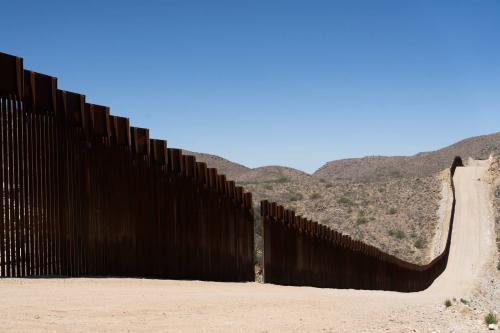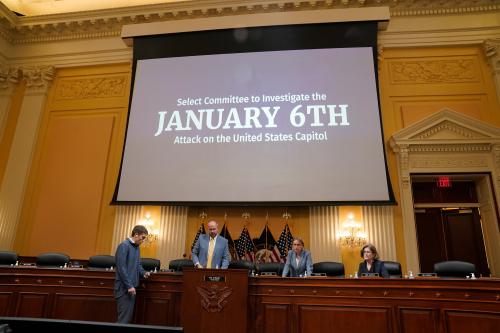In a word, no. The Fourth Amendment, which provides the “right of the people to be secure in their persons, houses, papers, and effects, against unreasonable searches and seizures,” has been a cornerstone of privacy from government intrusion since 1791. It has served us well across more than two centuries of technology advances, and there is no reason to expect that it will suddenly lose its protective power when domestic use of unmanned aircraft becomes common.
In February 2012, President Obama signed an FAA bill into law that provides for the integration of “drones,” or more properly, unmanned aerial vehicles (UAVs), into the nation’s airspace. This has generated legitimate concerns that UAVs could be used by the government in ways that infringe privacy rights, particularly in light of three 1980s-era Supreme Court decisions that found no Fourth Amendment violation in warrantless observations from manned government aircraft.
In 1986, the Court ruled in California v. Ciraolo that police officers who identified marijuana plants in a suspect’s backyard from a plane at an altitude of 1000 feet did not violate the Fourth Amendment. Three years later in Florida v. Riley, a majority of justices reached the same conclusion regarding observations of marijuana plants in a greenhouse from a helicopter at 400 feet. And in Dow Chemical Co. v. United States, a 1986 decision addressing government use of a commercial mapping camera to take aerial photographs of an industrial facility (as opposed to the “curtilage” of home considered in Ciraolo and Riley), the Court ruled in favor of the government.
These decisions do indeed indicate that government investigators will sometimes be able to use UAVs without a warrant. However, that does not mean that all government UAV observations, no matter how invasive, will be constitutional. In fact, a careful review of the opinions in these and other relevant Supreme Court cases suggests that the Fourth Amendment may provide significantly more protection than is often assumed.
In Ciraolo, for example, the Court held that the “Fourth Amendment simply does not require the police traveling in the public airways at this altitude [1000 feet] to obtain a warrant in order to observe what is visible to the naked eye.” A UAV equipped with an imaging system capturing much more detail than could the human eye would fall outside the scope of this holding. So, too, would one operating outside of public navigable airspace, though defining exactly where that lies for UAVs can be complex.
In Riley, which also involved naked eye observations, Justice White and the three other justices who joined his opinion found no Fourth Amendment violation in part because “no intimate details connected with the use of the home or curtilage were observed.” Justice O’Connor’s Riley concurrence emphasized that reasonable expectations of privacy, and not “compliance with FAA regulations alone,” should determine the constitutionality of aerial observations.
The Dow Chemical Court concluded that “the open areas of an industrial plant complex are not analogous to the ‘curtilage’ of a dwelling for purposes of aerial surveillance.” Yet, even under that much lower privacy standard, the Court implied the existence of some constitutional bounds, noting that “the photographs here are not so revealing of intimate details as to raise constitutional concerns.”
Several more recent Supreme Court decisions in non-aviation cases are also relevant to UAV privacy. In 2001, the Court ruled against the government in a case involving use of a ground-based thermal imager to detect an indoor marijuana growing operation by measuring the temperature of the roof and outside wall of a house. Writing for the Court in Kyllo v. United States, Justice Scalia expressed concern that allowing the government to freely collect any information “emanating from a house” would put people “at the mercy of advancing technology – including imaging technology that could discern all human activity in the home.” The rule adopted by the Kyllo Court provides that when “the Government uses a device that is not in general public use, to explore details of the home that would previously have been unknowable without physical intrusion, the surveillance is a ‘search’ and is presumptively unreasonable without a warrant.”
As has often been noted (including in Justice Stevens’ dissent in Kyllo), the “not in general public use” restriction can weaken with time as a formerly rare technology becomes common. However, Kyllo stops well short of endorsing the constitutionality of using a commonly available technology to observe a home. As Justice Scalia wrote in response to the dissent on this specific point, the thermal imaging in Kyllo was not “routine.” The Kyllo Court did not need to address the question of observations using routine technology, and specifically declined to do so.
Under a balanced reading of Kyllo, government use of a UAV to reveal “details of the home that would previously have been unknowable without physical intrusion” would be unconstitutional today. Ten years from now, when UAVs will be common, that still may be the case – but that conclusion will need to come from a ruling other than Kyllo.
Most recently, the Supreme Court found against the government in United States v. Jones [PDF], a January 2012 decision that addressed the constitutionality of affixing a GPS tracking device to a vehicle without a valid warrant. While the basis for the decision was narrow – the Court found a Fourth Amendment violation in the physical trespass that occurred during the placement of the GPS device on the vehicle – the aspects of the Jones opinions addressing extended surveillance are directly relevant to long-endurance UAVs.
The opinion of the Court, delivered by Justice Scalia, stated that extended electronic surveillance “without an accompanying trespass” may be unconstitutional, but noted that the “present case does not require us to answer that question.” In a concurrence, Justice Alito wrote that “the use of longer term GPS monitoring in investigations of most offenses impinges on expectations of privacy.” And in a separate concurrence, Justice Sotomayor noted the “existence of a reasonable societal expectation of privacy in the sum of one’s public movements.” Thus, the justices are on record recognizing the constitutionality question raised by new technologies enabling extended surveillance, though they deferred its resolution to another day.
In the aggregate, these rulings provide cause for optimism that, with respect to government UAV observations, the Fourth Amendment will be reasonably protective. Whether it will be sufficiently protective is a different question, and one well worth attention. But when engaging in that discussion, it is important not to lose sight of the substantial constitutional foundation we already have.



Commentary
Op-edWill Drones Outflank the Fourth Amendment?
September 20, 2012